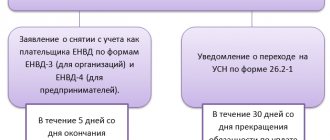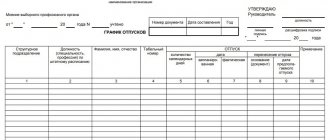The volume of work in a certain position does not always require the involvement of a full-time employee. The solution in this case may be to hire a part-time worker or assign an employee to combine positions. Despite sounding similar, there is a significant difference between part-time and combination.
Part-time work is the performance by an employee of a labor function in his free time from his main job. Part-time work is formalized with a separate employment contract, in which it is indicated that the work is not the main one. Part-time work can be internal, when part-time work and the main work are performed by one employer, and external - if work is carried out by different employers.
Combination is the performance by an employee of additional work in another position without interruption from his main job. Combining positions cannot be external, because additional work must be performed while the employee is at his main job.
In this article we will take a closer look at part-time and combination jobs and compare their features in the table.
Submit reports online
Who is allowed to work together?
Part-time work is associated with an increased burden on the employee. Although additional working time is already limited by Article 284 of the Labor Code of the Russian Federation (no more than four hours a day), the legislation also establishes a number of prohibitions and restrictions on part-time work. These restrictions are caused not only by protecting the employee from overload, but also by a possible decrease in the quality of work during part-time work, as well as by respecting the interests of employers.
- Article 282 of the Labor Code of the Russian Federation establishes a ban on part-time work for workers under eighteen years of age and for work with harmful or dangerous working conditions, if the main work is performed under the same conditions.
- Employees whose job function is related to driving vehicles cannot work part-time if they have the same responsibilities at their main job (Article 329 of the Labor Code of the Russian Federation).
- It is prohibited for state and municipal employees to hold a second job (Article 17 of Law No. 79-FZ dated July 27, 2004).
- Part-time work for heads of organizations can only be permitted with the consent of the owner of the organization or the authorized body of the legal entity (Article 276 of the Labor Code of the Russian Federation).
- For cultural workers and teaching, medical, and pharmaceutical workers, part-time work is permitted only if their main job has a reduced working time (Resolution of the Ministry of Labor of the Russian Federation dated June 30, 2003 No. 41).
- Athletes and coaches have the right to work part-time for another employer in the same capacity only with the permission of the employer at the main place of work (Article 348.7 of the Labor Code of the Russian Federation).
- Special regulations establish restrictions on part-time work for judges, prosecutors, lawyers, military personnel, deputies of the State Duma of the Russian Federation and members of the Government of the Russian Federation.
Violation of the law when hiring part-time employees for whom prohibitions or restrictions on such work have been established may lead to penalties for the employer (from 1 to 5 thousand rubles for officials and individual entrepreneurs and from 30 to 50 thousand rubles for organizations) .
In general, an employer cannot prohibit an employee from working part-time. There is also no limit to the number of other employers with whom an employee can enter into such employment contracts, provided, of course, that the condition limiting additional working hours is met.
Are you planning to open your own business? Don’t forget about a current account - it will simplify doing business, paying taxes and insurance premiums. Moreover, now many banks offer favorable conditions for opening and maintaining a current account. You can view the offers on our website.
Choose a profitable current account
When combination and part-time work are possible at the same time
Considering that part-time and part-time jobs are performed at different times and under different employment contracts, the legislator does not prohibit (except for a separate list of persons) performing such functions simultaneously. It is important to take into account that in this case the employee has almost a triple workload, which can affect attentiveness, physical fatigue, lead to psychological exhaustion and other negative consequences of prolonged work overload.
Therefore, in practice, if this is initiated within one enterprise, employers usually offer the employee to choose one of the possible options for additional income. An exception may be cases where this is a temporary measure at continuously operating enterprises. If such registration is carried out at different enterprises, this is quite possible.
Worth considering:
- if there is a registered part-time job, if the employee, by his consent, is assigned additional labor functions, the presence of an order is mandatory;
- It is advisable to arrange an additional combination of positions with an existing part-time position for a short period of unforeseen circumstances (for example, vacation or illness of the main employee);
- All work obligations assigned to you will have to be fulfilled in full; otherwise, disciplinary sanctions are possible.
Remember, although the legislator does not limit citizens (with the exception of certain categories) in exercising the right to work, it is advisable to adequately calculate one’s own strength in the process of performing additional work functions.
Part-time employment contract
When applying for part-time work, a separate employment contract must be concluded. The work function in an additional job may be the same as in the main job or different from it.
An employment contract for a part-time worker must include the usual contractual terms and must contain a clause that the work is performed part-time. The contract can be concluded for a certain period or indefinitely.
The work book is not filled out when concluding an employment contract with a part-time worker, but this can be done at the request of the employee. To do this, you must submit a document confirming additional work to the place of your main job (where the work book is kept). Such a document may be a certificate of employment, a certified copy of an order or an employment contract. In case of internal part-time work, the employee’s personal file (if it is maintained) will contain documents related to both jobs.
A part-time employment contract is terminated on the same grounds as in the general case, but an additional reason for terminating the contract will be the hiring of an employee for whom this work will become the main one.
If a part-time worker quits his main job, then at the workplace where he worked part-time, he can be hired full-time. To do this, it is necessary to draw up a corresponding additional agreement to the employment contract with him, and make an entry in the work book stating that the work from such and such a date is the main one for the employee.
What is the difference?
Part-time or part-time employment has fundamental differences, clearly presented in the table:
| Characteristics | Part-time job | Combination |
| Conclusion of an agreement | Yes | No (additional agreement) |
| Issuance of an order for the enterprise | Yes, about the reception | Yes, about combination |
| Assigning a personnel number | Yes | No |
| Recording working hours in timesheets | Yes | No |
| Registration of a new personal card | Yes | No |
| Reflection in the work book | Yes | No |
| Work time | Half the basic norm | Within a working day |
| Reward | According to time worked or output | Fixed, in percentage or total terms |
| Providing leave | Yes | No, but the amount is taken into account in average earnings |
| Probation | Yes, but the condition is rarely applied | No |
| Termination of work upon hiring (return to position) of a permanent employee | Yes | Yes |
| Accounting for an employee when calculating the average number | Yes, proportional to the rates | No, only in single size |
| Dismissal procedure | 2 weeks notice | 3 days notice |
You can also get detailed information about the differences between these procedures from the following video:
Features of part-time work
A part-time worker must manage to fulfill his duties at two or even several jobs, so his work schedule will have some features. Working hours are recorded in a time sheet, and an employee with an internal part-time job can be assigned two personnel numbers. The salary of a part-time worker is calculated according to the terms of the employment contract. Payment can be hourly, piecework or on any other terms.
When recording the working time of a part-time worker, you must pay attention to ensuring that the additional working time does not exceed half of the standard working time for the accounting period. For example, if in October the standard working time with a 40-hour weekly workload is 176 hours, then part-time working hours cannot be more than half of this standard, i.e. 88 hours per month.
A part-time worker can also be involved in overtime work, in excess of these norms, but must comply with the norm of overtime hours (no more than four hours for two days in a row and no more than 120 hours in the general accounting for the year). Payment for overtime hours is carried out as usual, according to the norms of Article 152 of the Labor Code of the Russian Federation (no less than one and a half times the amount for the first two hours, and no less than double the amount for all subsequent hours).
A part-time worker is provided with annual paid leave during the same period as at the main job. To confirm the date of leave, the employee must present a certificate or a copy of the leave order from his main job. The total duration of vacation during part-time work does not increase, but vacation pay is calculated taking into account the earnings received.
If an employee at a part-time job has not yet worked the required six months, then he must be given leave in advance. Depending on the position and category of the employee, the duration of vacations at the main job and part-time job may vary. In this case, to combine vacation periods, the employee may be given several days without pay.
A part-time employee may be sent on a business trip. When the part-time job is internal, the employer takes into account only his own interests, and problems with choosing the timing of the business trip do not arise. If the places of work are different, you can send a part-time worker on a business trip only for the time when he is free from his main job.
In the event that the time of a business trip for a part-time job cannot be rescheduled, employers must enter into an agreement among themselves on the order in which the employee will perform his job duties for this period (Resolution of the Government of the Russian Federation of October 13, 2008 No. 749). Of course, in practice such agreements are of little use, because a business trip is rarely so short that the employee has time to return to his main place of work the next day. But it is possible to agree that the employee will take several days without pay at his main job. Travel expenses are, of course, borne by the employer who sent the employee.
During the illness of an internal part-time worker, he is paid one temporary disability benefit based on one sheet, but taking into account the average earnings at all jobs. If the employers are different, then several certificates of incapacity for work are issued to be provided for each place of work.
Which is more profitable?
Stakeholders may benefit from both types of employment relationships, but there are also obvious disadvantages.
When combined
For employers, combination is more profitable, since in this case there is no need for rather complex documentation.
The employee and his business qualities are well known to management. For this reason, there is no need to set a time limit for its testing. It is also economically beneficial not to provide additional social guarantees - there is no need to pay for vacations and sick leave, or pay insurance premiums.
But the employee loses somewhat by taking on additional functions . His remuneration is exclusively the amount of additional payment fixed in the collective agreement. No time is provided to complete assigned additional tasks. You have to fit into a fairly tight work schedule.
Combination
The Labor Code does not establish prohibitions or restrictions on combinations (as opposed to part-time work), but the written consent of the employee is required to be assigned additional work.
When combined, the employee may be assigned some new job function (in this case we are talking about combining positions), the service area is expanded, or the volume of work in the same position is increased. It is important that when combining positions, additional work must be performed during the same working hours as the main one, therefore, the specifics of labor functions must be taken into account here. Thus, the positions of accountant and cashier are often combined; lawyer and personnel officer; manager and commercial director; leader and driver.
For performing additional work as part of a combination, the employee receives a remuneration, the amount of which is determined only by agreement of the parties. The law does not establish a minimum or maximum amount for this additional payment. For comparison, with a part-time job, the employee must receive the appropriate part of the official salary, for example, half-time or a quarter of the rate.
When registering a combination, the additional agreement to the employment contract must indicate:
- name of the combined position or profession;
- volume and content of additional work;
- the period for which the combination is established;
- amount of additional remuneration.
The employee and employer have the right to refuse to perform additional work ahead of schedule, for which they must notify the other party in writing no later than three days in advance.
| Part-time job | Combination |
| An employment contract when registering for part-time work is concluded (Articles 60.1 and 282 of the Labor Code of the Russian Federation) | A separate employment contract is not concluded, but an additional agreement is drawn up to it (Article 151 of the Labor Code of the Russian Federation) |
| An entry in the work book is made at the request of the employee (Article 66 of the Labor Code of the Russian Federation) | No entry is made into the work book |
| Termination of part-time work is formalized by termination of the employment contract | Termination of combining positions or performing an additional amount of work occurs when the employee refuses to perform it ahead of time or when the employer’s order to perform this work is canceled (Article 60.2 of the Labor Code of the Russian Federation) |
| Part-time work is performed in free time from the main job and should take no more than 4 hours a day (Article 60.1 of the Labor Code of the Russian Federation) | Additional time is not allocated to perform part-time work; the additional work function must be performed without interruption from the main job during the working day |
| Remuneration is made in proportion to the time worked or according to the volume of work performed (Article 285 of the Labor Code of the Russian Federation) | For combining positions, an additional payment is made, the amount of which is determined by agreement of the parties (Article 151 of the Labor Code of the Russian Federation) |
How is combination and part-time work done?
One of the main issues with which citizens turn to professional lawyers for advice is the correctness of registration of this type of work, in order to be able to fully receive payment for their work in the future. Of course, there are many similarities in the design of part-time and combination jobs, but there are also certain differences.
Therefore, we suggest that you familiarize yourself step-by-step with the actions of how labor relations are formalized in the case of using such forms of labor.
When combined:
- A vacancy is temporarily created within the existing staffing table (the position may be occupied, but no one will actually do the work due to the absence of the employee for valid reasons).
- The employer agrees with the employee, who is asked to perform the duties of an absent colleague, along with his main job, on the conditions, period, and level of monetary compensation. The form of approval can be a statement from the employee, his signature with consent on a memo from the immediate supervisor.
- An order is issued for the enterprise (division), on the basis of which the employee is assigned additional responsibilities. They immediately describe the amount or percentage of his compensation payments. The work is performed within the normal hours allocated for the implementation of labor functions in the main specialty.
When working together:
- A potential employee finds a vacancy with a job that interests him.
- Coordinates with his future (existing) employer the application for this vacancy within a certain period of time. Here you need to understand that he will be able to fulfill his duties only during the period of time that is free for his main work.
- He is registered as a newly hired employee (regardless of whether he gets a job at this or another enterprise). A passport, military ID, and insurance certificate are required. A personnel order is issued, the employee is approved (introduced to the existing) job description, and a workplace is determined.
- Here, the standard hours are calculated separately for each type of action performed.







